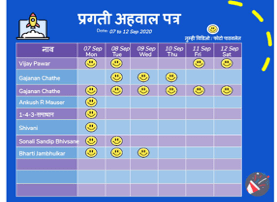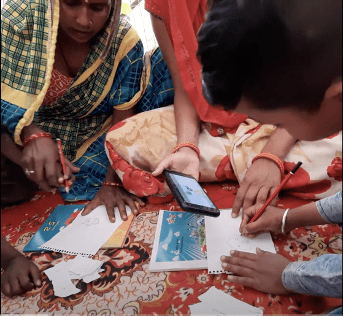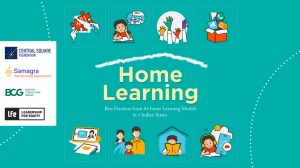Schools have gradually started reopening for in-person teaching in some states after being forced to shut for around 17 months since March, 2020. During this period, children’s learning along with their socio-emotional growth has suffered massively. According to a study by Azim Premji University, children didn’t just lose out on new learning experiences but also forgot much of what they had learnt in previous years — 92% of the children have lost one language ability while 82% have lost a mathematical ability from the previous year across all classes.
While there have been learning losses, significant efforts were undertaken to minimize these losses to the extent possible with governments and education-focused organizations coming together to build innovative solutions to facilitate learning at home. Some of these models include mohalla classes which leverage teachers and volunteers, teaching via SMS and IVRS, and WhatsApp-based learning. However, these have only been effective in small geographies where there has been a strong administrative push, access to digital learning resources, and an incentive for parents, volunteers, and the community at large to participate.
As schools reopen, we must focus on continuing the home-learning programmes since there remains a threat of disruptions due to any future Covid-19 wave which might cause sporadic school closures. Moreover, home-learning programmes over and above classroom instruction will provide children with additional instructional time, which is critical to helping them catch up. Efforts should not just be around continuation of these programmes but also on how they can be improved to make it scalable and sustainable



As schools reopen, we must focus on continuing the home-learning programmes since there remains a threat of disruptions due to any future Covid-19 wave which might cause sporadic school closures. Moreover, home-learning programmes over and above classroom instruction will provide children with additional instructional time, which is critical to helping them catch up.
How can we make at home learning more effective and scalable?
- Make it “Phygital”
While the digital divide remains a stark reality, there remains no doubt in the potential of technology to enable learning. Going forward, our solutions should be ‘phygital’, which integrates physical experiences with relevant engaging content facilitated by technology. While the physical ensures access, the digital layer acts as an amplifier. - Empower parents
Parents from low-income communities have limited awareness of their role in their child’s learning, and often have no information on how to support their children. The pandemic caused a huge shift and saw parents emerge as the third pillar of education, after teachers and volunteers. Evidence suggests that increased parental involvement in their child’s learning enhances learning outcomes. Our home learning solutions must focus on providing parents with the right tools and skills to help them create an enabling learning environment. Rocket Learning found encouraging results in its programme in Uttar Pradesh which relied upon physical nudges through teachers and the community, and digital nudges through WhatsApp for sustaining the motivation of parents. - Reorient teachers in their new role
School closures due to the pandemic saw the role of teachers evolve from teaching in classrooms to becoming enablers of learning at home. Teachers need to be reoriented to their new roles through on-the-job training and 1:1 support through academic mentors. There is a strong need to train teachers on using digital mediums to teach, track progress on home learning and provide personalized support and feedback to parents and children throughout the week.
Government systems and administrators will need to communicate effectively with the trifecta of teachers, parents and children to ensure that their interactions continue to grow.
Our recommendations for the future
As we step into a future filled with uncertainties, government systems and administrators will need to communicate effectively with the trifecta of teachers, parents and children to ensure that their interactions continue to grow. Rocket Learning is working with multiple state governments to adopt home-learning as a priority on their agenda as they prepare to reopen schools. Here is a set of recommendations from our own experience.
Conduct awareness campaigns on blended learning
While mass awareness campaigns on a safe return to school are critical, they must also highlight that a parent’s role in helping their children learn at home must continue, and they should now be closely involved with school. We conducted a control treatment study designed by researchers at IIM Ahmedabad and found that pre-school children participating in an effective digital learning program are almost 10% ahead in their cognitive development, literacy and numeracy skills than those who are not. Some states like Uttar Pradesh are conducting remedial sessions for the concepts that children should have learnt in the past year as revision. The state is also focusing on keeping parents informed about their child’s educational progress through weekly parent-teacher meetings. If we want children to ‘catch-up’ with the missed learning of 16 months, ‘home’ will have to complement the school in a child’s education.


Institutionalize homework both digitally and through print material
We need to standardize children’s homework through a mix of print homework/parent booklets and digital content over WhatsApp/other apps that are in sync with the curriculum. Parent workbooks can be pictorial to act as a guide for parents with low educational qualifications, and also contain activities that they can do with their children at home like counting the number of onions (this needs no extra resources and can be done in a playful manner which doesn’t seem like an explicit learning activity). This will reinforce the learning concepts and form a continuum between school and home.
Continue and Incentivise teacher and parent collaboration
Initiatives launched in the past year to engage teachers with parents through Youtube live sessions, E-Choupals, socially-distanced parent-teacher meetings, and mohalla classes must continue because these will complement the learning in schools. Teachers’ efforts to engage parents can be incentivised by making these a part of their monitoring framework while parents can be recognized as ‘smart families’ for their initiative. This channel of communication would help teachers and parents exchange feedback on the child’s learning while the teachers can guide parents to support their children effectively.
It’s challenging to build a system to ensure children learn effectively and bridge their learning gaps without fully knowing what the future holds for us. However, we must broadly look to build the system around three key foundations: greater democratization of knowledge and resources for both teachers and learners, improved collaboration among educators and open source culture of sharing resources, and leverage technology to bridge the gap between school and home.



